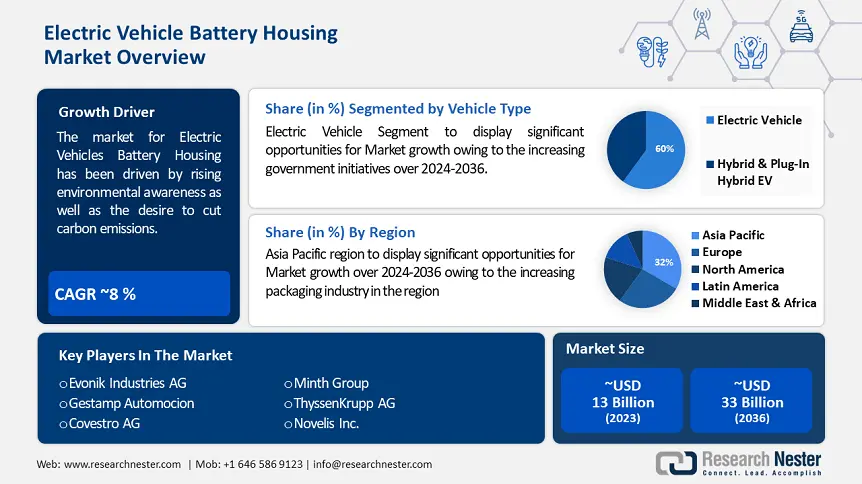
Electric Vehicle Battery Housing Market size was valued at USD 15.04 billion in 2024 and is expected to reach USD 56.39 billion by 2037, expanding at around 10.7% CAGR during the forecast period i.e., between 2025-2037. In the year 2025, the industry size of electric vehicle battery housing is assessed at USD 16.33 billion. The market for electric vehicles battery housing has been driven by rising environmental awareness as well as the desire to cut carbon emissions. Every year, a typical passenger car emits 4.6 metric tons of CO2. This assumes that the average gas-powered vehicle on the road currently gets about 22.2 mpg and covers 11,500 miles per year. For every gallon of gasoline used, about 8,887 grams of CO2 are created.
In addition to these, policies & incentives from the government will be crucial in determining how the EV battery housing industry develops. Globally, a large number of governments are putting laws and incentives into place to encourage the use of electric vehicles. Subsidies, tax breaks, and legislative initiatives are some of the strategies used to lessen reliance on cars using conventional internal combustion engines. Over the next few years, there will be a major increase in demand for EV batteries and associated components, such as battery housing, as more automakers make investments in electric vehicle technology.

Author Credits: Saima Khursheed
Copyright © 2024 Research Nester. All Rights Reserved

FREE Sample Copy includes market overview, growth trends, statistical charts & tables, forecast estimates, and much more.
Have questions before ordering this report?